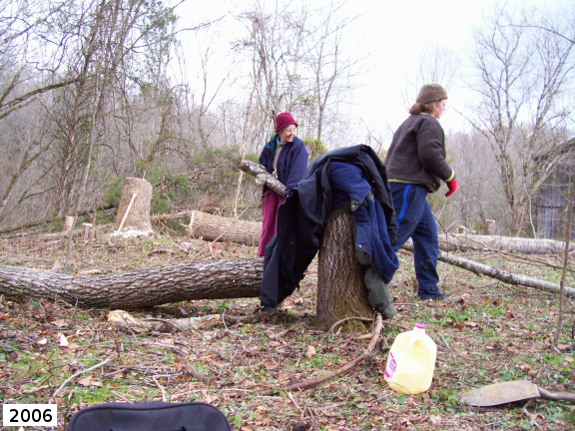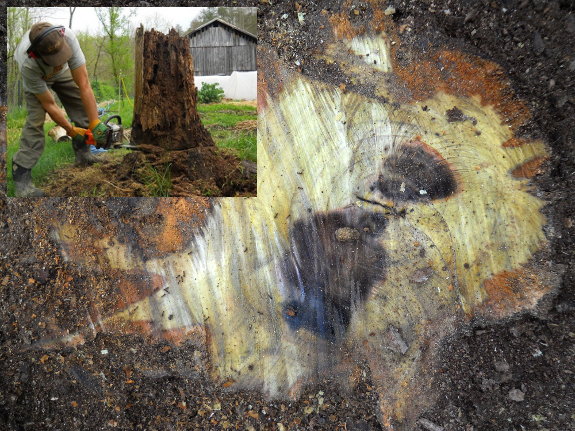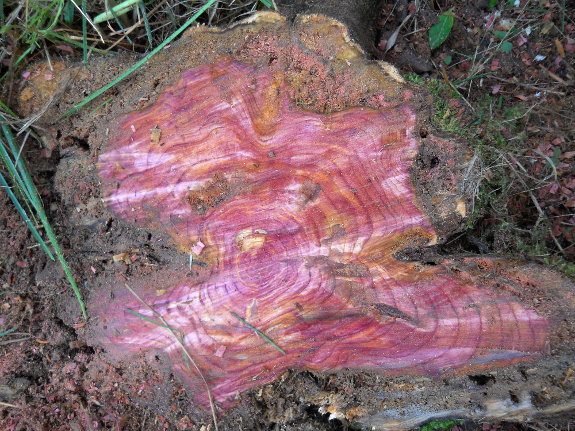
Stump decay rates

Mark's been cutting out
stumps off and on all winter to make our yard easier to mow. I
come along behind him and gather up the rotting wood (some of it nearly
stump
dirt) to add to my hugelkultur
donuts around fruit
trees in the waterlogged forest garden.
In general, the smaller
stumps rot faster, just as you'd expect. In fact, I've pulled
several four inch in diameter stumps out of the ground by myself after
wiggling them like loose teeth for a few seconds. But this week's
stumps didn't follow the trend.

The biggest stump was
well rotted despite being nearly three feet in diameter. When
Mark's saw made it all the way through, I could tell that the tree
(probably a black walnut) had grown quickly in its then-pasture
location, creating growth rings about an inch in diameter.
Perhaps the fast growth contributed to fast decay?

In contrast, the
littlest stump had barely decomposed at all. We both knew why as
soon as the saw bit into the wood --- the odor of red
cedar quickly filled
the air. I wonder how long that red cedar stump will sit in the
ground before it disappears?
Want more in-depth information? Browse through our books.
Or explore more posts by date or by subject.
About us: Anna Hess and Mark Hamilton spent over a decade living self-sufficiently in the mountains of Virginia before moving north to start over from scratch in the foothills of Ohio. They've experimented with permaculture, no-till gardening, trailersteading, home-based microbusinesses and much more, writing about their adventures in both blogs and books.
Want to be notified when new comments are posted on this page? Click on the RSS button after you add a comment to subscribe to the comment feed, or simply check the box beside "email replies to me" while writing your comment.

I heard some bad things about that one heath, I ended up getting this one http://www.harborfreight.com/electric-chain-saw-sharpener-68221.html
It very simple to set up. What I found whats nice is to grind one chain to 20 degrees for hardwoods and 35 degrees on another chain for softwoods. Literally takes 5 minutes for a full sharpen on a 18" chain. What I like when your cutting stumps, you run into rocks in the trunk sometimes that the tree pulled up through itself and can sharpen a warn out chain brand new.
Only thing to it on this cheap unit is when you bring it down to grind just guide it, if you force it to much the plastic isn't rigid enough to stay lined up.